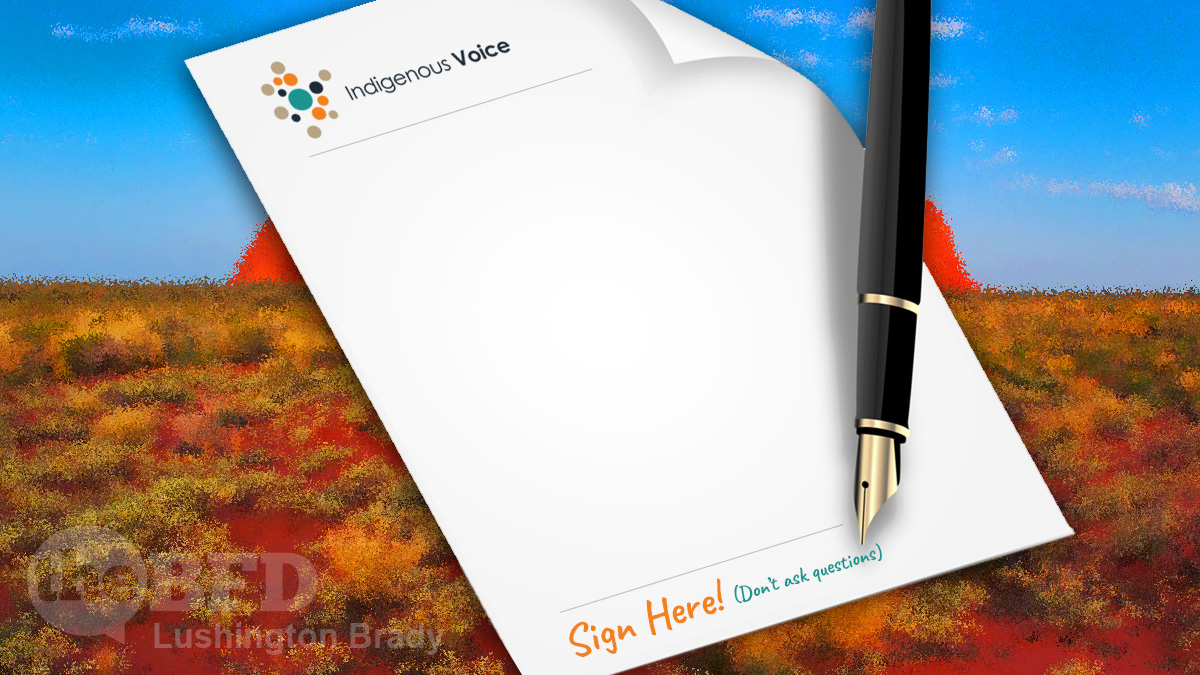The plan to steamroll an Aboriginal ethnostate in Australia proceeds apace.
Of course, its enthusiasts won’t call it that. They prefer to call it a “Voice” – whatever that means. Don’t bother asking what it means, because they won’t tell us. As an American politician famously put it, we have to vote for it first in order to see what’s in it.
The architects of the proposed Indigenous Voice have deliberately left some questions about its structure unanswered so that Australians can help finalise what will become the only representative body for Aboriginal and Torres Strait Islander people.
This is nonsense, of course: Aboriginal and Torres Strait Islander people have a representative body, like every other Australian: it’s called “Parliament”.
But how long will those questions remain unanswered? Before or after the referendum they’re determined to have, whether we want it or not?
Three guesses.
Prominent researcher and academic Marcia Langton, who oversaw the voice proposals with former Australian Race Discrimination commissioner Tom Calma, told The Australian: “Most importantly, while current mechanisms for Indigenous Australians to have their voices heard do exist at many levels, there is currently no national broad-based Aboriginal and Torres Strait Islander representative body and this is the gap the National Voice aims to fill.
Which raises more questions than it answers.
But Langton admits that “current mechanisms” exist: those would be exactly the same mechanisms as exist for every other Australian, regardless of race, creed or colour. The ability to vote at federal, state and local government elections, to be represented by or stand for election as members of such. Not to mention all the rest of the gamut of civil society mechanisms, from NGOs to volunteer community organisations.
So what is this “national broad-based Aboriginal and Torres Strait Islander representative body”? Who knows?
The Indigenous Voice could give unsolicited advice to parliament on matters it believes are relevant, under proposed models to be tested at 60 public engagements from February.
Australians are being asked to comment on proposals for a voice that is not only responsive to requests for advice but also able to give advice without having to wait to be asked.
The National Voice, comprising two representatives from each state and territory, would be linked to up to 35 local and regional voices.
The Australian
Which sound an awful lot like a parallel, race-based government.
Among the “deliberately unanswered questions” might be:
- How is eligibility to join this “Voice” to be determined? Do we really want to start compiling race-based lists of Australians? Shall we recognise eligibility with a good, old-fashioned Ahnenpass?
- If the “Voice” is constitutionally enshrined, how is it not a third chamber of parliament?
- Do the “Voice” proponents still want “Aboriginal sovereignty” – with all that “sovereignty” constitutionally implies?
Too many questions deliberately not being answered. If we’re being asked to vote for something, but we won’t be told what it is, there can only be one answer to such an obviously fishy proposal.
Please share this article so that others can discover The BFD

